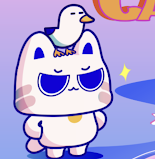Experiential Design / Task 1
Bachelor of Design (Honours) in Creative Media
Experiential Design - MMD60204
Experiential Design - Task 1
Overview
> Module Information Booklet
> Class Activities
> Task Instruction
- Topic Ideas
- Reflective Report
> Feedback
> Reflection
Module Information Booklet
Class Activities
As we developed our journey map, we took the opportunity to explore how we could integrate AR techniques into the visitor experience. This exercise sparked discussions about real-world apps of AR and how could they enhance visitor engagement while also addressing various challenges faced by them.
Also worked as a group, our scenario focused on the gym, and explored how AR could transform workouts and enrich the user experience in the overall fitness journey.
After that, we added a 3D cube above the uploaded image.
It was an exciting moment when I successfully saw the cube appear while scanning the image. I felt thrilled to bring the virtual into reality on my own!
Task Instruction - Trending Experience
Requirement:
2. To write a short reflective report on their blog based on their findings.
3. To propose 3 potential ideas for their project.
Topic Ideas
Here are my topic ideas:
Proposed Solution:
My Art Gallery allows users to "collect" artworks by scanning AR markers. These works are then stored in a personalized virtual gallery where users can write a journal and reflect on their experiences. Additionally, the built-in wiki function will be provide too for each work, deepening the appreciation and understanding of art.
Proposed Solution:
Nature Journey offers a nature experience where users can simulate the feeling of being in a natural environment by scanning themed cards (e.g., forest, beach). The app provides immersive visuals and ambient sounds to help users relax and reconnect with nature anytime and anywhere.
Proposed Solution:
Manage My Fridge can scan and track your foods in the fridge. Users can set expiry dates, receive alerts for soon-to-expire items, and use filters to quickly locate your forgotten snacks. This helps reduce waste and improves food organization and awareness.
Feedback
Reflection
Before joining this module, my understanding of AR was quite limited—I mainly thought of it as a flashy tool used in games or filters (sorry but). However, after going through the class activities and hands-on tasks like creating marker-based AR with Vuforia and Unity, my perspective completely changed. I began to understand that AR not just as a visual effect, but as an interactive medium that could enhance real-world experiences. Learning how to create wireflow and user journey also helped me think more critically about how AR could be integrated significantly into our everyday lives. These exercises encouraged me to look at current problems and think creatively about how AR could solve them in a way that feels natural and intuitive.
Through further research into existing apps and market trends, I saw a gap in how AR is used for emotional and practical purposes—like mental wellness or daily convenience. That’s what led me to propose the three ideas: My Art Gallery, Nature Journey, and Manage My Fridge. Each idea came from a mix of personal interest and real-world needs, shaped by the knowledge I gained from class and research. Whether it’s helping users reconnect with nature, better manage their food, or deepen their appreciation for art, I now see AR as a powerful tool for building a meaningful while also accessible experiences.
.png)








.png)
Comments
Post a Comment